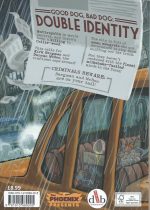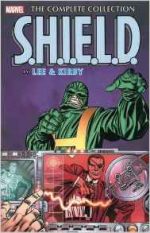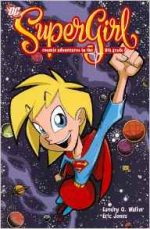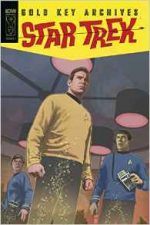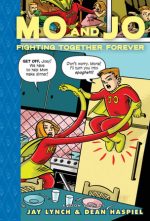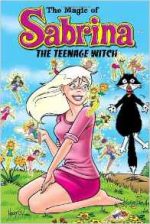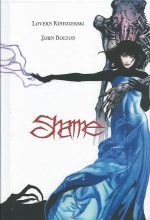
By George Herriman, edited by Bill Blackbeard (Fantagraphics Books)
ISBN: 978-1-60699-477-1
The cartoon strip starring Krazy Kat is unquestionably a pinnacle of graphic innovation, a hugely influential body of work which shaped the early days of the comics industry and became an undisputed treasure of world literature.
Krazy and Ignatz, as it is dubbed in these glorious commemorative collected tomes from Fantagraphics, is a creation which can only be appreciated on its own terms. It developed a unique language – at once both visual and verbal – and dealt with the immeasurable variety of human experience, foibles and peccadilloes with unfaltering warmth and understanding without ever offending anybody.
Sadly however it baffled far more than a few…
It was never a strip for dull, slow or unimaginative people who simply won’t or can’t appreciate the complex multilayered verbal and pictorial whimsy, absurdist philosophy or seamless blending of sardonic slapstick with arcane joshing. It is still the closest thing to pure poesy that narrative art has ever produced.
Herriman was already a successful cartoonist and journalist in 1913 when a cat and mouse who had been cropping up in his outrageous domestic comedy strip The Dingbat Family/The Family Upstairs graduated to their own feature. Krazy Kat debuted in William Randolph Hearst’s New York Evening Journal on Oct 28th 1913 and, largely by dint of the publishing magnate’s overpowering direct influence and interference, gradually spread throughout his vast stable of papers.
Although Hearst and a host of the period’s artistic and literary intelligentsia (notably – but not exclusively – e.e. Cummings, Frank Capra, John Alden Carpenter, Gilbert Seldes, Willem de Kooning, H.L. Mencken and later Jack Kerouac) all adored the strip, many local and regional editors did not; taking every potentially career-ending opportunity to drop it from the comics section.
Eventually the feature found a home and safe haven in the Arts and Drama section of Hearst’s papers. Protected there by the publisher’s heavy-handed patronage, the Kat flourished unharmed by editorial interference and fashion, running generally unmolested until Herriman’s death in April 1944.
The basic premise is simple: Krazy is an effeminate, dreamy, sensitive and romantic feline of indeterminate gender hopelessly in love with Ignatz Mouse: rude crude, brutal, mendacious and thoroughly scurrilous.
Ignatz is a true unreconstructed male; drinking, stealing, constantly neglecting his wife and children and always responding to Krazy’s genteel advances by smiting the Kat with a well-aimed brick (obtained singly or in bulk from noted local brick-maker Kolin Kelly) which the smitten kitten invariably deems tokens of equally recondite affection.
The third crucial element completing an animalistic eternal triangle is lawman Offissa Bull Pupp, who is completely besotted with Krazy, well aware of the Mouse’s true nature, but hamstrung by his own amorous timidity and sense of honour from removing his devilish rival for the foolish feline’s affections.
Krazy is blithely oblivious of Pupp’s dilemma…
Also populating the ever-mutable stage are a stunning supporting cast of inspired bit players such as dreaded deliverer of unplanned, and generally unwanted, babies Joe Stork; hobo Bum Bill Bee, unsavoury trickster Don Kiyoti, busybody Pauline Parrot, self-aggrandizing Walter Cephus Austridge, inscrutable – often unintelligible – Chinese mallard Mock Duck, Joe Turtil and a host of other audacious characters – all equally capable of stealing the limelight and even supporting their own features.
The exotic quixotic episodes occur in and around the Painted Desert environs of Coconino (based on the artist’s vacation retreat in Coconino County, Arizona) where surreal playfulness and the fluid ambiguity of the flora and landscape are perhaps the most important member of the cast.
The strips are a masterful mélange of unique experimental art, wildly expressionistic and strongly referencing Navajo art forms whilst utilising sheer unbridled imagination and delightfully evocative lettering and language: alliterative, phonetically and even onomatopoeically joyous with a compelling musical force (“He’s simpfilly wondafilâ€, “l’il dahlink†“is it pussible?†or “It aint kendy afta all – it’s a brickâ€).
Yet for all that, the adventures are poetic, satirical, timely, timeless, bittersweet, self-referential, fourth-wall bending, eerie, idiosyncratic, astonishingly hilarious escapades encompassing every aspect of humour from painfully punning shaggy dog stories to riotous, violent slapstick.
There have been numerous Krazy Kat collections since the late 1970s when the strip was rediscovered by a better-educated, open-minded and far more accepting audience. This third volume – covering 1922-1924 in a reassuringly big and hefty (231 x 15 x 305 mm) softcover edition – completes the controversial, tempest-tossed feature’s run of full-page comic strips and also includes a legendary run of full-colour extra pages Herriman produced in a last-ditch attempt to escape a largely intellectual ghetto and break into the lives of John Q. Public.
The colour works – intense, expansive but never dumbed down – are some of Herriman’s very best and most inspired, but they still failed to hit with the bustling hoi polloi way back then…
Context, background and possible explanations are delivered by Bill Blackbeard in his effusive essay ‘A Kat of Many Kolors: Jazz Pantomime and the Funny Papers in 1922’ describing the creation of the rainbow-hued Saturday specials – which ran for 10 Saturdays from January 7th to March 11th 1922 – and the text feature also covers the tragically lost modern dance ballet created by composer John Alden Carpenter.
After this comes samples of an earlier Herriman strip ‘Little Tommy Tattles’ from 1903 and Michael Tisserand’s scholarly expose ‘Better Late Than Never: Herriman’s First Daily Strip Finally Unearthed!’ describing – with a vast hoard of compelling examples of ‘Mrs. Waitaminnit – the Woman Who is Always Late’ – how funny business got done in the days before newspaper photography, powered flight, laugh tracks or emojis…
The prose section then ends with a moving tribute In Memoriam to Bill Blackbeard ‘The Man Who Saved Comics’ and who, like Moses, toiled long and hard but never got to see his great work completed…
On to the strips then: within this magical atlas of another land and time the unending drama plays out as usual, but with some intriguing diversions. We open with 1922 where, following traditional jests about New Years and voluntary behaviour modifications, the acutely surreal colour pages rub shoulders with the regular monochrome masterpieces, tackling such issues as the growing of breadfruit, jailing “elefints†and door mice and the doors they carry about with them at all times.
The perils of smoking are visually exposed, as are the surprising perils and problems of coconuts, telephone reception in Coconino County and jail overcrowding. Things even get weirdly self-referential when Krazy discovers he’s the star of a newspaper comic strip…
Herriman continues to divide his efforts between beguiling word plays and stunningly smart silent slapstick sequences. Whilst dreaded stork Joe’s natal missions go into overdrive and increasingly awry, disease, despair and sporadic brick provision also provides plenty of drama for Ignatz, Offissa Pupp and the motley irregulars
As the Jazz Era further unfolds through 1923 and 1924, technological advancements such as aeroplanes, radio, motion pictures, flashlights, electrical gimmicks and radium shampoo increasingly offer plenty of fodder for foolish thoughts and deeds.
Seasonal landmarks – New Years, St. Valentine’s Day, Easter, Christmas – take on a greater relevance but the old standbys remain paramount: Prohibition sidestepped; pomposity punctured and penny-pinching money-making schemes from the town’s great and good always coming to nothing…
Also unchanging but infinitely fresh are instances of weather which thinks it’s a comedian, the endless pursuit of hyperactive jumping beans, the street value of the common house brick and a certain foul mouse’s attempts to murder, marmelise and maltreat the Kat, which grow ever more intricate, but are always met with the same unshakeable gratitude and unswerving devotion…
New hobbies are tried: astronomy, inventing, driving automobiles; and Krazy tries to barter a unique singing voice into a career in the entertainment arts.
…And sometimes plain mischief rules such as when Herriman puckishly reverses plot, pictures and dialogue just to see what will happen…
At the nether end of this tome the scholarly amongst you can enjoy some full-colour archival illustration as Jeet Heer discusses ‘The Domestic Herriman: “Us Husbands‒: a strip the tireless artist created as a populist family comedy which ran in Sunday papers for most of 1926. It’s represented here by 48 pages complete with alternating “topper†strips ‘A Big Moment in a Man’s Life’ and ‘Mistakes Will Happen’.
Wrapping up the cartoon gold is another batch of erudite and instructional ‘Ignatz Mouse Debaffler Pages’, providing pertinent facts, snippets of contextual history and necessary notes for the young and potentially perplexed and one last surprise – a lost Krazy Kat page never published before…
Herriman’s epochal classic is a remarkable achievement: in all the arenas of Art and Literature there has never been anything like these comic strips which have shaped our industry and creators, inspired auteurs in fields as disparate as prose fiction, film, dance, animation and music whilst delivering delight and delectation to generations of wonder-starved fans.
If, however, you are one of Them and not Us, or if you actually haven’t experienced the gleeful graphic assault on the sensorium, mental equilibrium and emotional lexicon carefully thrown together by George Herriman from the dawn of the 20th century until the dog days of World War II, this glorious compendium is the most accessible way to do so. Don’t waste the opportunity…
© 2012 Fantagraphics Books. All rights reserved.
